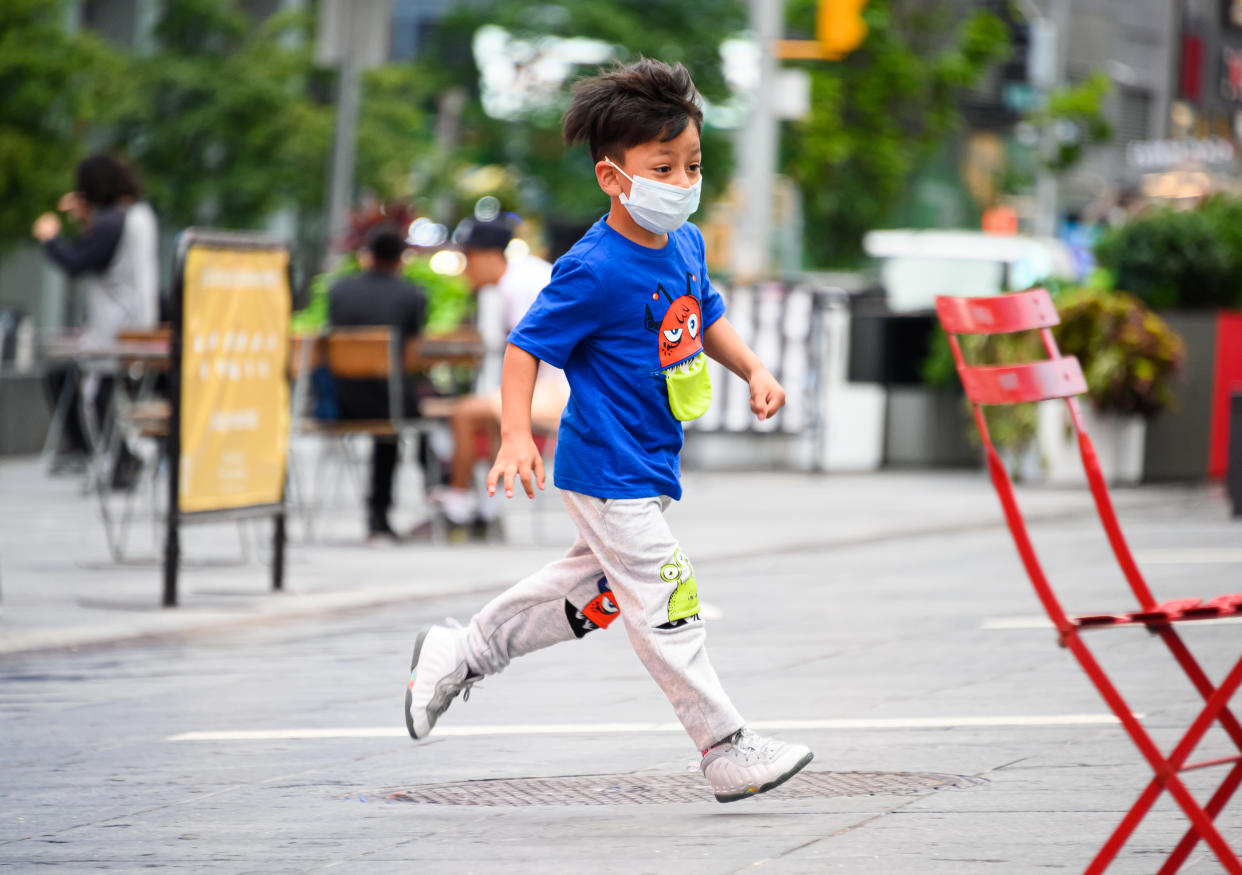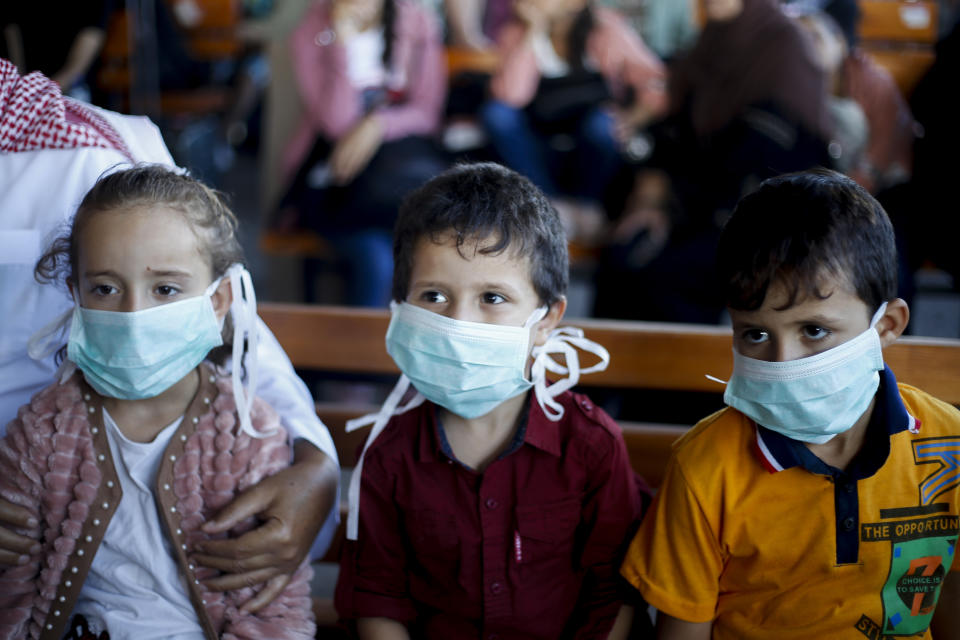Coronavirus linked to onset of type 1 diabetes in children

New research has linked the coronavirus to the onset of type 1 diabetes in children.
The infection is said to be mild in four out of five cases, with young people generally being particularly resilient. One study suggested children are half as likely to catch the virus in the first place, let alone become seriously ill.
A minority of patients develop complications after overcoming the infection, however, with the coronavirus being linked to everything from hearing loss to temporary brain damage.
Concerns have been raised type 1 diabetes may be another side effect after 30 youngsters presented at hospitals across north-west London with a new case of the disease amid the outbreak’s peak.
Read more: Russia's coronavirus vaccine has 'rather little detail'
This is around double the number of new incidences that occurred during the same period over the past five years.
Although unclear, a protein on the coronavirus may attack insulin-producing cells in a patient’s pancreas, according to the study’s Imperial College London authors.
Not all of the 30 youngsters were tested for the pathogen, however, with just five showing evidence of a past or ongoing infection.
Other experts noted the study “raises concern”, but added the evidence is “weak”.

Type 1 diabetes ‘unusually high’ in children amid coronavirus
“It appears children are at low risk of developing serious cases of COVID-19 [the disease triggered by the coronavirus], however, we do need to consider potential health complications following exposure to the virus in children,” said study author Karen Logan.
Between 23 March – when lockdown was implemented in the UK – to 4 June, the scientists analysed data from five paediatric inpatient units across four north-west London NHS trusts: Imperial College Healthcare, Chelsea & Westminster, The Hillingdon Hospitals and London North West University Healthcare.
Read more: Chronic fatigue emerging as coronavirus complication
Results – published in the journal Diabetes Care – revealed an increase in type 1 cases in two of the units, which diagnosed 10 young patients each.
This is compared to an average of just two and four new incidences, respectively, in April and May over the past five years.
Diagnosis rates in the other three units, however, were similar to in the past.
“Our analysis shows that during the peak of the pandemic the number of new cases of type 1 diabetes in children was unusually high in two of the hospitals in north-west London compared to previous years,” said Logan.
“When we investigated further, some of these children had active coronavirus or had previously been exposed to the virus.”
Twenty-one of the youngsters – aged between 23 months and 16 years – were swabbed for the coronavirus after developing its tell-tale fever or cough, of which two came back positive.
Sixteen were tested for coronavirus antibodies – immune-fighting proteins that circulate in the bloodstream, suggesting an infection has already been fought off.
Read more: Harvard scientist calls for ‘crappy’ coronavirus tests
Three of these were positive, implying five of the children were either infected with the coronavirus at the time or had already overcome it.
The scientists stressed, however, this may be an underestimate.
“During the peak of the pandemic widespread access to testing wasn’t available so we may have missed further cases of COVID-19 in these children who have new-onset type 1 diabetes,” said study author Rebecca Unsworth.

Be ‘mindful of this potential link’
Of the 30 patients, 70% arrived at hospital with diabetic ketoacidosis (DKA), a serious complication that occurs if the body produces high levels of blood acids called ketones.
Type 1 diabetes comes about when the cells that produce insulin, the hormone that lowers blood sugar levels, are mistakenly destroyed by a patient’s immune system.
If blood glucose levels are persistently elevated, it can lead to serious complications like a heart attack, blindness or even limb amputations.
While it may sound alarming, type 1 diabetes can be controlled via insulin injections or pumps.
DKA comes about when the body does not have enough insulin, causing it to break down fat as fuel. Ketones then accumulate, which can be life-threatening.
Of the DKA patients, more than half (52%) were in a severe state – a much higher proportion than expected, according to the scientists.
Twelve of the children showed signs of clinical shock – a life-threatening condition that occurs when the body’s blood flow is restricted, while four had to be treated in intensive care.
The scientists believe their study is the first to show a potential link between the coronavirus and the emergence of type 1 diabetes in children, however, similar reports have emerged in China and Italy.
The coronavirus enters cells via the angiotensin converting enzyme 2 (ACE2) receptor, which is “strongly expressed” in the pancreas.
The study was carried out to “raise awareness of a possible”, but “not definitive”, link between the coronavirus and new-onset type 1 diabetes.
“Our study was limited to one UK region and more research is needed to establish whether there is a definitive link between the two, but in the meantime we hope clinicians will be mindful of this potential link,” said Logan.
Other experts agree additional studies are required.
Professor Julian Hamilton-Shield from the University of Bristol called the research “interesting”, but added “any suggestion of an increase in actual incidence should be treated cautiously, as only some units contributing had greater than expected presentations across a really short time span”.
Professor Paul Hunter from the University of East Anglia noted the research “raises a concern”, with infections in general being known to trigger DKA in “susceptible individuals”.
“However, the epidemiological evidence presented in this paper is weak and cannot be used as evidence of proof of association,” he added.
“The main weakness of this paper is the identification of an increase in only two of five inpatient units.
“Across the UK at any time cases of new ketoacidosis will vary from one year to the next and it is often tempting but can be wrong to assume that whatever infection is common in the community is the cause of an increase in diagnoses that could have arisen just by chance.
“Any association between diabetic ketoacidosis and COVID-19 may simply represent the association between ketoacidosis and any infection or in may represent something particular to COVID-19.
“It is important this observation is followed up.”



